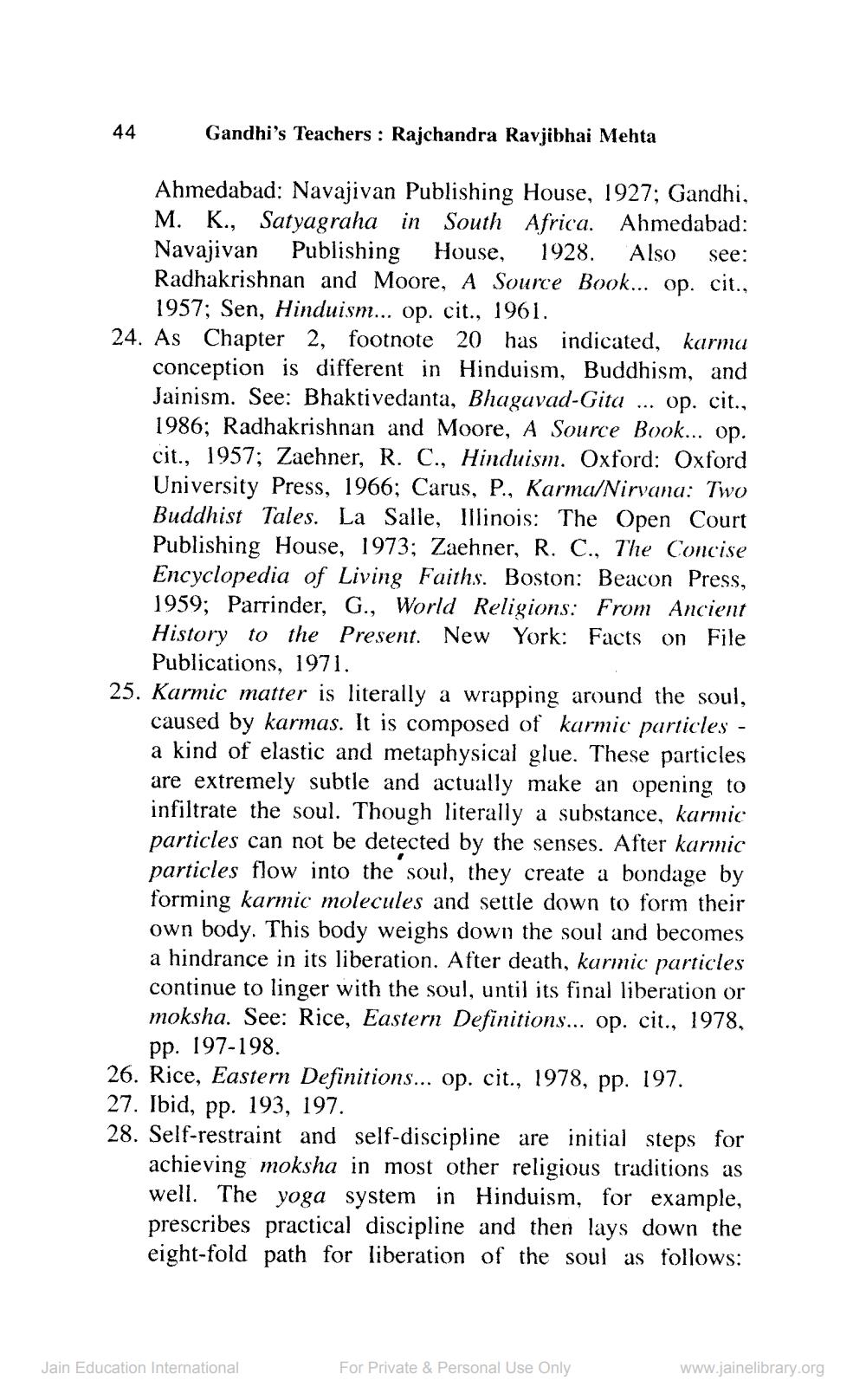________________
44
Gandhi's Teachers : Rajchandra Ravjibhai Mehta
Ahmedabad: Navajivan Publishing House, 1927; Gandhi, M. K., Satyagraha in South Africa. Ahmedabad: Navajivan Publishing House, 1928. Also see: Radhakrishnan and Moore, A Source Book... op. cit.,
1957; Sen, Hinduism... op. cit., 1961. 24. As Chapter 2, footnote 20 has indicated, karma
conception is different in Hinduism, Buddhism, and Jainism. See: Bhaktivedanta, Bhagavad-Gita ... op. cit., 1986; Radhakrishnan and Moore, A Source Book... op. cit., 1957; Zaehner, R. C., Hinduism. Oxford: Oxford University Press, 1966; Carus, P., Karma/Nirvana: Two Buddhist Tales. La Salle, Illinois: The Open Court Publishing House, 1973; Zaehner, R. C.. The Concise Encyclopedia of Living Faiths. Boston: Beacon Press, 1959; Parrinder, G., World Religions: From Ancient History to the Present. New York: Facts on File
Publications, 1971. 25. Karmic matter is literally a wrapping around the soul,
caused by karmas. It is composed of karmic particles - a kind of elastic and metaphysical glue. These particles are extremely subtle and actually make an opening to infiltrate the soul. Though literally a substance, karmic particles can not be detected by the senses. After karmic particles flow into the soul, they create a bondage by forming karmic molecules and settle down to form their own body. This body weighs down the soul and becomes a hindrance in its liberation. After death, karmic particles continue to linger with the soul, until its final liberation or moksha. See: Rice, Eastern Definitions... op. cit., 1978,
pp. 197-198. 26. Rice, Eastern Definitions... op. cit., 1978, pp. 197. 27. Ibid, pp. 193, 197. 28. Self-restraint and self-discipline are initial steps for
achieving moksha in most other religious traditions as well. The yoga system in Hinduism, for example, prescribes practical discipline and then lays down the eight-fold path for liberation of the soul as follows:
Jain Education International
For Private & Personal Use Only
www.jainelibrary.org




